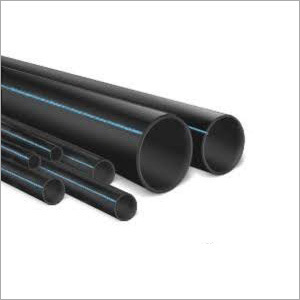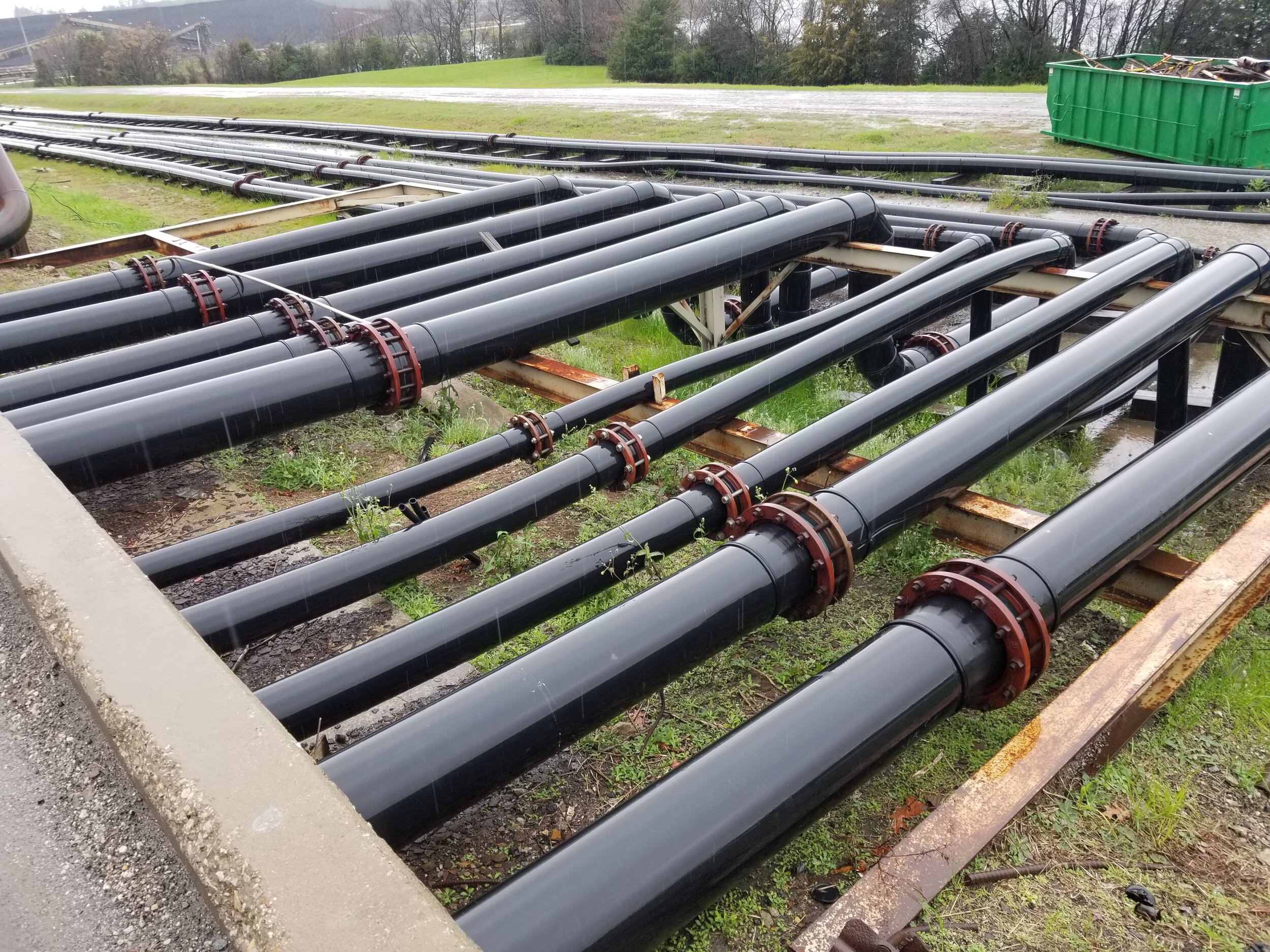Why Partnering with Pipe Supplier American Plastics Midland Ensures Trusted Solutions
Explore the Production Refine Behind High-Quality HDPE Pipeline and Its Applications
The production procedure of top notch HDPE pipes is complex and systematic. It begins with the choice of basic materials that boost efficiency. Following this, ethylene undergoes polymerization to develop material, which is then shaped with extrusion. Quality control is extremely important, guaranteeing that the final item fulfills rigorous criteria. The trip of HDPE pipelines does not end with manufacturing. Their applications throughout different markets expose a wider relevance worth examining.
Understanding HDPE: Qualities and Advantages

High-density polyethylene (HDPE) is a flexible polycarbonate known for its toughness and resistance to various environmental variables. This product exhibits exceptional tensile toughness, making it ideal for demanding applications. Its low-density structure contributes to a light-weight product, helping with convenience of managing and installation. HDPE also showcases remarkable resistance to chemicals, which lessens degradation when revealed to severe materials.
The material's low moisture absorption additionally enhances its long life, making it suitable for use in pipes and tank. Furthermore, HDPE is immune to ultraviolet (UV) radiation, guaranteeing that items keep their integrity even when revealed to sunlight. Moreover, its adaptability permits the creation of detailed forms without compromising stamina. The environmentally friendly nature of HDPE, usually stemmed from recycled materials, includes to its appeal, promoting lasting practices in production. In general, these properties and advantages make HDPE a preferred choice for various commercial and consumer applications.
Raw Material Choice for HDPE Manufacturing
The selection of basic materials for HDPE production is vital to verify the end product meets the desired specifications and high quality requirements. High-density polyethylene (HDPE) is mainly created from polymerized ethylene, stemmed from fossil fuels such as gas or petroleum. The top quality of these feedstocks greatly affects the mechanical and thermal residential or commercial properties of the final HDPE.
Ingredients additionally play a considerable duty in improving HDPE's efficiency, including antioxidants, UV stabilizers, and colorants, which enhance longevity and resistance to environmental aspects. The choice process must consider not only the chemical structure of the raw products yet likewise their processing features to assure reliable production.
Furthermore, the sourcing of raw products must prioritize sustainability and compliance with ecological regulations, as liable methods are vital in today's market. Inevitably, careful basic material choice lays the foundation for generating high-grade HDPE pipes ideal for varied applications.
The Extrusion Process: Forming HDPE Pipe
The extrusion procedure plays a vital function fit HDPE pipelines, starting with thorough material preparation techniques that guarantee perfect flow and consistency. Equally essential is the layout of the die, which straight affects the last measurements and surface high quality of the pipeline. With each other, these factors add greatly to the performance and top quality of HDPE pipe production.
Product Preparation Strategies
Reliable manufacturing of HDPE pipelines starts with meticulous product prep work strategies, specifically the extrusion procedure. Throughout this phase, high-density polyethylene resin is first dried to remove dampness, making certain suitable flow characteristics. The resin is then fed into the extruder, where it undergoes home heating and melting, transforming right into a viscous state. This home heating process is meticulously regulated to keep the product's integrity and efficiency. The molten HDPE is forced with a die, shaping it right into a continual pipe form. Appropriate temperature level monitoring during extrusion is essential, as it straight influences the material's homes and the end product quality. Once formed, the HDPE pipeline is cooled and reduced to specified lengths, all set for succeeding processing and applications.
Die Style Value
Precision in die design plays a crucial duty in the extrusion process of HDPE pipes. The die acts as the last shaping device, directly influencing the pipe's measurements, wall surface thickness, and surface area coating. A properly designed die assurances uniform material flow, reducing problems such as abnormalities and weak points. The geometry of the die have to be enhanced to accommodate the certain residential properties of HDPE, including its viscosity and thermal actions during extrusion. In addition, the cooling price of the material as it passes via the die can markedly influence the pipeline's structural stability. Consequently, buying sophisticated die modern technology is essential for suppliers aiming to create high-grade HDPE pipes that fulfill industry requirements and client expectations.
High Quality Control Procedures in HDPE Manufacturing
Numerous variables affect the top quality of HDPE pipe production, reliable high quality control actions are vital to ensure uniformity and reliability in the last item (Pipe Supplier American Plastics Midland). Trick high quality control practices include strenuous product inspection, verifying that the raw polyethylene satisfies established requirements for purity and density. Throughout the extrusion process, parameters such as temperature, stress, and cooling time are closely checked to keep dimensional precision and structural stability
On top of that, post-production testing is essential; makers often carry out hydrostatic examinations to analyze the pipe's stamina and resistance to pressure. Aesthetic inspections for surface area defects additionally improve quality control. Qualification from appropriate standards companies, like ASTM or ISO, provides an additional layer of reliability. By executing these complete quality assurance actions, producers can lessen problems, improve efficiency, and make sure that the HDPE pipelines meet the specific needs of different applications, inevitably leading to customer contentment and rely on the item.
Applications of HDPE Pipeline Throughout Industries
HDPE pipes are made use of across numerous industries due to their durability and convenience. In water circulation systems, they assure reliable shipment, while in wastewater management, they supply reliable remedies for waste transportation. Additionally, farming watering networks take advantage of HDPE's resistance to corrosion and versatility, making it a perfect selection for modern farming methods.

Water Circulation Solutions
A substantial variety of sectors count on high-density polyethylene (HDPE) pipes for efficient water circulation systems. Understood for their longevity and resistance to rust, HDPE pipes are extensively utilized in metropolitan supply of water networks, farming irrigation, and commercial applications. Their light-weight nature promotes easy handling and installation, decreasing labor prices and time. In addition, HDPE pipelines can accommodate numerous stress degrees, making them suitable for both reduced and high-pressure systems. hdpe pipe fittings Midland TX. The versatility of the material enables seamless combination into existing infrastructure, click here minimizing the requirement for substantial excavation. In addition, HDPE's resistance to chemical seeping warranties that the water delivered remains risk-free and tidy, making it an optimal option for keeping the top quality of safe and clean water throughout numerous sectors
Wastewater Administration Solutions
Reliable water distribution systems also lead the way for cutting-edge wastewater management remedies, where high-density polyethylene (HDPE) pipes play a significant duty. Popular for their sturdiness and resistance to deterioration, HDPE pipes are ideal for carrying wastewater in different settings. Their versatility enables simple installment in complex environments, lessening the requirement for extensive excavation. Additionally, HDPE's smooth interior surface reduces friction, enhancing flow prices and efficiency. These pipes are additionally immune to chemical leaching, making sure that contaminants do not compromise the surrounding setting. Industries, communities, and treatment facilities significantly rely upon HDPE pipelines for their integrity and longevity, making them a preferred option for modern-day wastewater management systems. This adaptability emphasizes the vital importance of HDPE pipelines throughout countless applications.
Agricultural Watering Networks
Agricultural watering networks profit greatly from the usage of high-density polyethylene (HDPE) pipelines, which provide effective and reputable water shipment to plants. HDPE pipes are light-weight, making them simple to transport and install, while their flexibility permits different setups in varied surfaces. These pipelines show superb resistance to deterioration, chemicals, and UV radiation, ensuring toughness in extreme farming atmospheres. Additionally, their smooth indoor surface area minimizes rubbing loss, enhancing water flow and minimizing power expenses associated with pumping. The durability of HDPE pipes, commonly going beyond 50 years, adds to reduce upkeep and replacement expenditures. Farmers progressively rely on HDPE pipes to boost watering effectiveness and advertise sustainable farming methods, eventually leading to enhanced plant returns and source conservation.

Future Trends in HDPE Pipe Innovation
As the demand for lasting and effective infrastructure expands, innovations in HDPE pipe technology are positioned to transform different markets. Arising patterns include the integration of wise technologies, such as sensing units and IoT abilities, which assist in real-time tracking of pipe problems, decreasing upkeep prices and preventing leakages. In addition, the growth of sophisticated production methods, such as 3D printing, is allowing the manufacturing of facility, personalized pipe designs that satisfy specific job needs.
In addition, the concentrate on recycling and round economic situation techniques is driving the technology of HDPE pipelines made from recycled products, enhancing sustainability. Improved jointing methods, such as electro-fusion and mechanical fittings, are additionally enhancing setup effectiveness and dependability. The expanding emphasis on ecological policies is pushing manufacturers to take on greener manufacturing procedures, making sure that HDPE pipes not just meet market criteria yet also promote a more lasting future for framework development.
Regularly Asked Concerns
How Does HDPE Compare to Various Other Plastic Products?
HDPE outmatches numerous other plastic products regarding resilience, chemical resistance, and flexibility. Its reduced thickness and high tensile strength make it optimal for different applications, commonly going beyond alternatives in both performance and durability.
What Are the Ecological Effects of HDPE Production?
The environmental effects of HDPE manufacturing include greenhouse gas discharges, energy intake, and potential air pollution from making processes. Additionally, improper disposal can cause soil and water contamination, elevating concerns regarding lasting ecological impacts.
Can HDPE Water Lines Be Recycled?
Yes, HDPE pipelines can be recycled. Several facilities approve utilized HDPE for handling, transforming it right into brand-new items. This recycling contributes to sustainability efforts, decreasing plastic waste while saving sources and energy in the production cycle.
What Is the Life-span of HDPE Piping?

Just How Do Temperature Level Variants Influence HDPE Pipe Efficiency?
Temperature variations significantly influence HDPE pipe efficiency, affecting versatility and toughness. Heats can lead to softening, while low temperatures may cause brittleness, ultimately influencing the pipe's sturdiness and suitability for different applications in varied atmospheres.